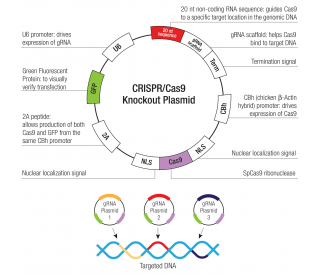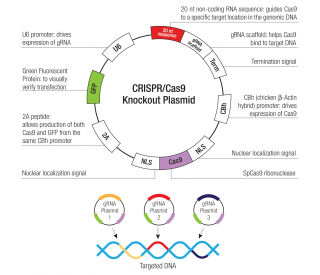详细说明
Species Reactivity
Human, Mouse
Specificity
Detects human and mouse VEGF-B in direct ELISAs and Western blots. Recognizes both the VEGF-B 167 and VEGF-B 186 isoforms. In Western blots, no cross-reactivity with recombinant human (rh) VEGF, rhVEGF-C, rhVEGF-D, rhCTGF, rhPlGF, rhLDGF, or rhPDGF is observed.
Source
Monoclonal Mouse IgG 1 Clone # 58013
Purification
Protein A or G purified from hybridoma culture supernatant
Immunogen
E. coli-derived recombinant human VEGF-B 167
Pro22-Arg188
Accession # AAB06274Formulation
Lyophilized from a 0.2 μm filtered solution in PBS with Trehalose. *Small pack size (SP) is supplied as a 0.2 µm filtered solution in PBS.
Label
Unconjugated
Applications
Recommended
ConcentrationSample
Western Blot
1 µg/mL
Recombinant Human VEGF-B 167 (Catalog # )
Recombinant Mouse VEGF-B 167 (Catalog # )
Recombinant Mouse VEGF-B 186 (Catalog # )Immunohistochemistry
3-25 µg/mL
See below
Please Note: Optimal dilutions should be determined by each laboratory for each application. are available in the Technical Information section on our website.
Data Examples
Immunohistochemistry | VEGF‑B167/186 in Human Breast Cancer Tissue. VEGF‑B167/186 was detected in immersion fixed paraffin-embedded sections of human breast cancer tissue using Mouse Anti-Human/Mouse VEGF‑B167/186 Monoclonal Antibody (Catalog # MAB751) at 3 µg/mL overnight at 4 °C. Tissue was stained using the Anti-Mouse HRP-DAB Cell & Tissue Staining Kit (brown; Catalog # ) and counterstained with hematoxylin (blue). Specific staining was localized to cytoplasm and cell membranes of cancer cells. View our protocol for . |
Preparation and Storage
Reconstitution
Reconstitute at 0.5 mg/mL in sterile PBS.
Shipping
The product is shipped at ambient temperature. Upon receipt, store it immediately at the temperature recommended below. *Small pack size (SP) is shipped with polar packs. Upon receipt, store it immediately at -20 to -70 °C
Stability & Storage
Use a manual defrost freezer and avoid repeated freeze-thaw cycles.
12 months from date of receipt, -20 to -70 °C as supplied.
1 month, 2 to 8 °C under sterile conditions after reconstitution.
6 months, -20 to -70 °C under sterile conditions after reconstitution.
Background: VEGF-B
Vascular endothelial growth factor B (VEGF-B), also known as vascular endothelial growth factor-related factor (VRF), is a member of the VEGF family of growth factors that share structural and functional similarity (1, 2). Five mammalian members, including VEGF-A, -B, -C, -D and PlGF, have been identified. VEGF family members are disulfide-linked dimeric proteins that are important regulators of physiological and pathological vasculogenesis, angiogenesis and lymphangiogenesis. VEGF-B is expressed in most tissues, especially in heart, skeletal muscle and pancreas. In many tissues, VEGF-B is co-expressed and can heterodimerize with VEGF (3). By alternative splicing, two isoforms of mature VEGF-B containing 167 or 186 amino acid (aa) exist (3, 4). The two VEGF-B isoforms have identical amino-terminal cysteine-knot VEGF homology domains but the carboxyl end of VEGF-B167 differs from that of VEGF-B186 by the presence of a highly basic cysteine-rich heparin binding domain. Whereas VEGF-B186 is a secreted diffusible protein, VEGF-B167 is sequestered into the cell matrix after secretion. Both VEGF-B isoforms bind VEGF receptor 1 (VEGF R1), but not VEGF R2 or VEGF R3 (5). On endothelial cells, ligation of VEGF R1 by VEGF-B has been shown to regulate the expression and activity of urokinase type plasminogen activator and plasminogen activator inhibitor 1. VEGF-B167 and a proteolytically processed form of VEGF-B186 (VEGF-B127) also bind neuropilin-1 (NP-1), a type I transmembrane receptor for semaphorins/collapsins, ligands involved in neuron guidance (6). Besides VEGF-B, NP-1 has been shown to bind PLGF-2, VEGF165 and VEGF R1 (6, 7). The many interactions of NP-1 with VEGF ligands and receptor suggests that NP-1 may function as a regulator of angiogenesis (7).
References:
Li, X. and U. Eriksson (2001) Int. J. Biochem Cell Biol. 33:421.
Olofsson, B. et al. (1999) Curr. Opin. Biotechnol. 10:528.
Olofsson, B. et al. (1996) Proc. Nat. Acad. Sci. USA 93:2576.
Grimmond, S. et al. (1996) Benome Res. 6:124.
Olofsson, B. et al. (1998) Proc. Nat. Acad. Sci. USA 95:11709.
Makinen, T. et al. (1999) J. Biol. Chem. 274:21217.
Fuh, G. et al. (2000) J. Biol. Chem. 275:26690.
Long Name:
Vascular Endothelial Growth Factor B
Entrez Gene IDs:
7423 (Human); 22339 (Mouse)
Alternate Names:
vascular endothelial growth factor B; VEGFB; VEGF-B; VEGF-related factor; VRFVEGFL







![Anti-CARD11 antibody [EPR2557] 100µl](https://yunshiji.oss-cn-shenzhen.aliyuncs.com/202407/25/ryuecwsu03m.jpg)
![Anti-CARD11 antibody [EPR2557] 40µl](https://yunshiji.oss-cn-shenzhen.aliyuncs.com/202407/25/0l4lvuuesv1.jpg)

![Anti-Caspase-9 antibody [E23] 100µl](https://yunshiji.oss-cn-shenzhen.aliyuncs.com/202407/25/3jnd4412gqi.jpg)

![Anti-CKS2 antibody [EPR7946(2)] 100µl](https://yunshiji.oss-cn-shenzhen.aliyuncs.com/202407/25/cfdt44gkqre.jpg)



 粤公网安备44196802000105号
粤公网安备44196802000105号